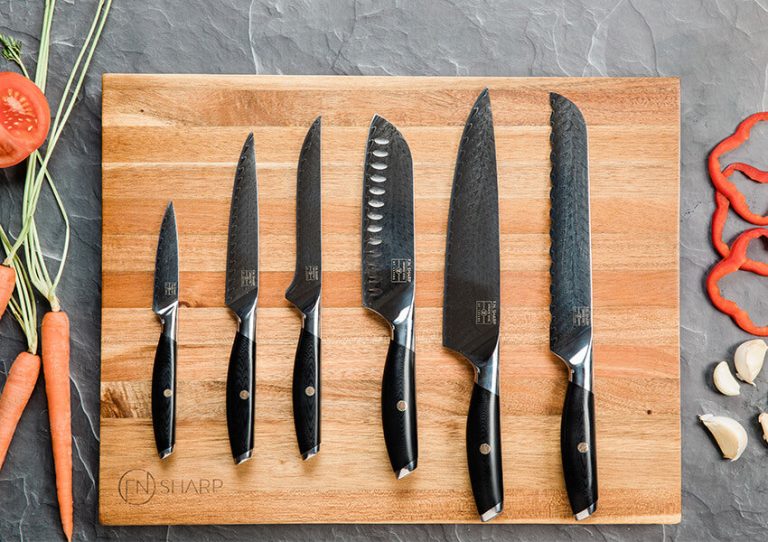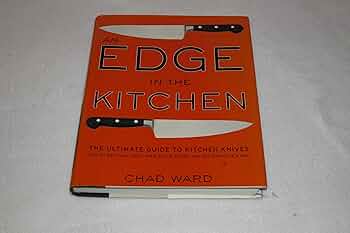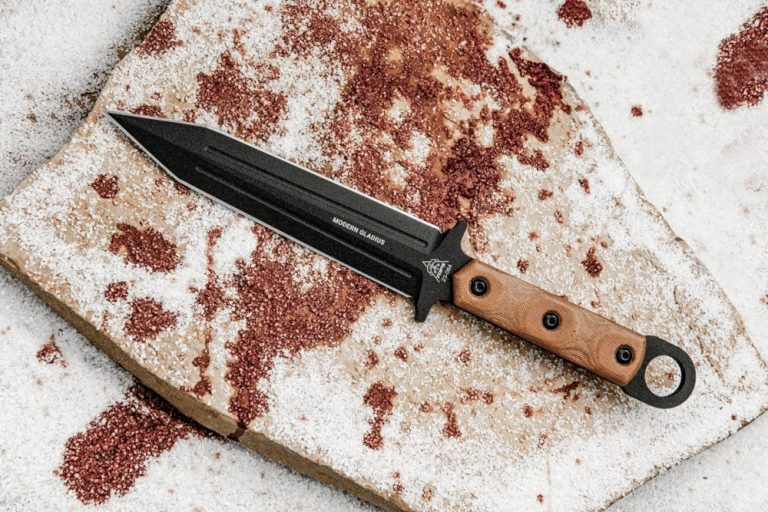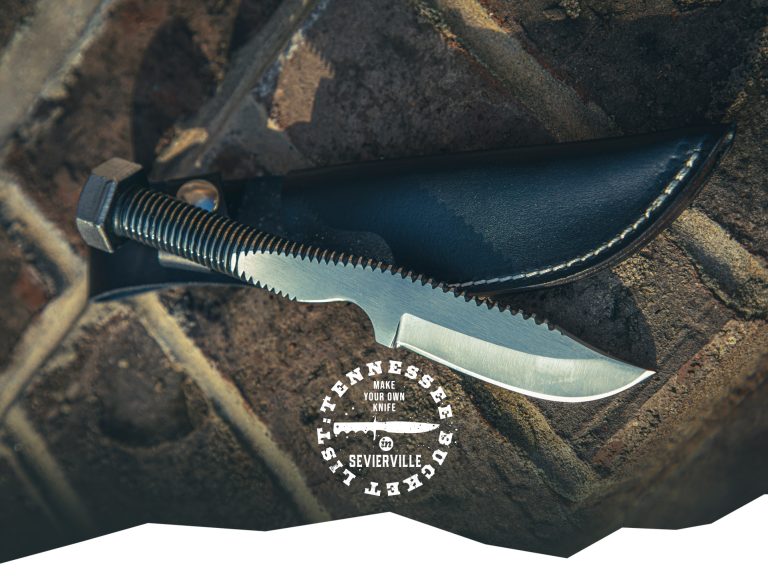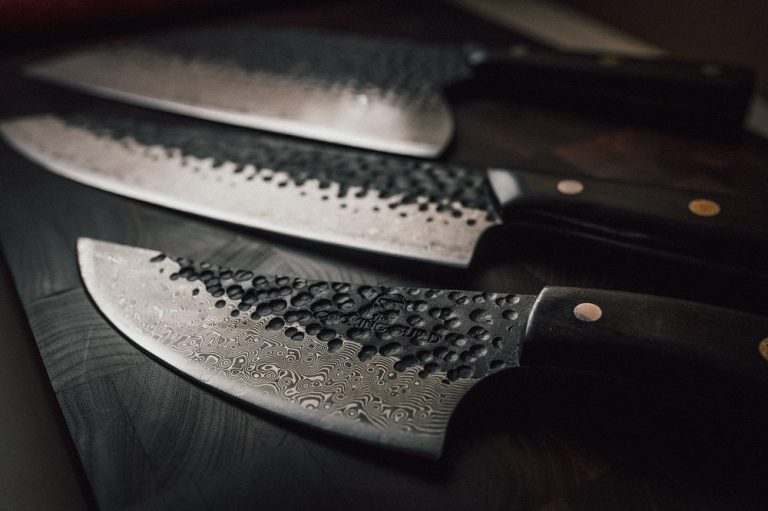Knife Tang : Unveiling the Hidden Power of Superior Blade Connections
A knife tang refers to the portion of the blade that extends into the handle and provides stability and strength to the knife. In addition to connecting the blade and handle, the tang also influences the knife’s balance and overall performance.
Understanding the different types of knife tangs is vital when selecting a knife for specific tasks, as each tang offers varying degrees of strength and durability. Whether you need a full tang, hidden tang, or partial tang, it is crucial to consider the tang design and its impact on the knife’s performance and longevity.
Choose a knife with a suitable tang type for your needs to ensure optimal functionality and reliability.

Credit: orionmagazine.org
Why Knife Tang Matters In Blade Connections
Knife tang is a crucial element in blade connections as it plays a significant role in ensuring durability. By enhancing the handle-blade bond, the knife tang helps to create a strong and sturdy connection that can withstand various tasks. The knife tang also influences the overall knife balance, impacting the user’s experience during use. A properly designed and well-constructed knife tang contributes to a well-balanced knife, allowing for precise handling and maneuverability. It is essential to pay attention to the knife tang when selecting a knife, as it can greatly affect the knife’s performance and longevity. By understanding the importance of knife tang in blade connections, users can make informed decisions when choosing a knife that meets their specific needs.
Different Types Of Knife Tangs And Their Advantages
Knife tangs are an important aspect to consider when selecting a knife. The different types of knife tangs offer various advantages depending on the intended use of the knife.
| Full Tang | Advantage: |
| A full tang extends the entire length of the knife handle, providing unparalleled strength and stability. This type of tang is highly recommended for heavy-duty tasks and outdoor activities, as it ensures the blade does not detach from the handle under pressure. | |
| Hidden Tang | Advantage: |
| A hidden tang offers a combination of aesthetics and functionality. The tang is inserted into the handle, making it visually attractive while maintaining a sturdy construction. This type of tang is commonly found in kitchen knives, where balance and appearance are equally important. | |
| Partial Tang | Advantage: |
| A partial tang strikes a balance between durability and weight. It extends partially into the handle, reducing the overall weight of the knife while still providing enough strength for everyday tasks. Knives with partial tangs are versatile and suitable for various cutting needs. |
Understanding The Construction Of Knife Tangs
Knife Tang
The Anatomy of a Knife Tang
A knife tang refers to the portion of the blade that extends into the handle. It is a critical component of a knife’s construction, impacting its strength, balance, and overall performance. Knife tangs are available in different styles, each serving a specific purpose. Common styles include full tangs, partial tangs, and hidden tangs.Full tangs are widely preferred for their enhanced durability and stability. They run the entire length and width of the handle, providing optimal strength and balance.Partial tangs, on the other hand, extend only partially into the handle. While they are lighter and more cost-effective to produce, they may compromise the overall sturdiness of the knife.Hidden tangs are concealed within the handle, with only a small portion exposed. These tangs are commonly used in decorative or collectible knives since they trade-off some functionality for aesthetic appeal.Manufacturers employ various materials for knife tangs, including stainless steel, carbon steel, and titanium. Each material offers unique properties in terms of strength, corrosion resistance, and weight.
Common Materials Used in Knife Tangs
Knife tangs can be crafted using different materials, each with its own set of strengths. Some commonly used materials include stainless steel, which provides excellent corrosion resistance and durability; carbon steel, known for its exceptional sharpness and toughness; and titanium, which offers a lightweight option without compromising strength.It’s important to consider the intended use and maintenance requirements of the knife when selecting the appropriate tang material. A stainless steel tang, for example, may be ideal for kitchen knives that come in frequent contact with moisture, while carbon steel tangs are often preferred for outdoor and survival knives due to their ruggedness.
Manufacturing Techniques for Superior Knife Tangs
Manufacturers employ various techniques to ensure optimal quality when crafting knife tangs. These techniques include forging, stock removal, and machining.Forging involves shaping the tang through heat and pressure, resulting in a robust and durable tang. This technique is commonly used for high-end knives due to its time-consuming and labor-intensive nature.Stock removal is the process of shaping the tang by removing excess material from a pre-shaped blade. It offers greater flexibility in design and is often more cost-effective.Machining, on the other hand, involves using specialized machines to precisely cut and shape the tang. This technique is commonly employed for mass production, as it allows for faster and more consistent tang production.By selecting the appropriate tang style, material, and manufacturing technique, knife manufacturers can create superior knives that meet the specific needs and preferences of knife enthusiasts and professionals alike.
Assessing Knife Tang Quality For Optimal Blade Performance
| Assessing Knife Tang Quality for Optimal Blade Performance |
| In order to ensure optimal blade performance, it is important to carefully assess the quality of a knife tang. The tang, which refers to the part of the knife that extends into the handle, plays a crucial role in determining the overall strength, rigidity, and comfort of the knife. |
| Visual Indicators of Quality Knife Tangs |
| When inspecting a knife tang, there are various visual indicators that can provide insight into its quality. Look for tangs that have a consistent and smooth appearance, free from any visible defects or irregularities. Additionally, check for properly aligned pins or fastening mechanisms that securely hold the tang in place. |
| Testing Knife Tang Strength and Rigidity |
| To evaluate the strength and rigidity of a knife tang, a simple test can be performed. Apply pressure to the tang by gripping the handle firmly and observe if there is any flex or movement. A high-quality tang should remain rigid and provide a solid foundation for the blade, minimizing the risk of breakage or failure during use. |
| Evaluating Knife Tang Comfort and Handle Grip |
| Another important aspect to consider when assessing a knife tang is the comfort and handle grip it provides. A well-designed tang should fit comfortably in the hand, ensuring a secure and ergonomic grip. Pay attention to factors such as the shape, size, and texture of the tang, as these can greatly impact the overall handling and maneuverability of the knife. |
The Benefits Of Custom Knife Tangs
Custom knife tangs offer a range of benefits that can significantly enhance the performance and functionality of your blade. These tailorable tang designs provide a personalized touch to meet individual needs, unlocking a whole new level of blade performance.
One of the primary advantages of custom knife tangs is the ability to tailor the design to your specific requirements. Whether you prefer a full tang, hidden tang, or partial tang, you can customize the size, shape, and materials based on your preferences. This allows for better handle grip, improved balance, and overall enhanced control during usage.
Another key consideration is the cost and availability of custom tangs. While customizations may increase the price, they provide a unique and customized solution that is tailored to your needs. Additionally, with the growing popularity of custom knife-making, there are now numerous skilled artisans and manufacturers offering a wide range of custom tang options.
| Advantages of Custom Knife Tangs |
|---|
| Personalized design to meet individual needs |
| Better handle grip, improved balance, and control |
| Wide range of custom tang options available |
Maintaining And Caring For Knife Tangs
Properly maintaining and caring for knife tangs is essential to ensure their longevity and performance. Regular cleaning and lubricating of the tangs will prevent corrosion and rust, keeping them in optimal condition. To clean the tangs, wipe them down with a soft cloth to remove any dirt, debris, or moisture. Then, apply a small amount of food-safe oil or lubricant to the tangs to protect against rust.
If you notice any loose or damaged tangs, it is important to address them promptly. Loose tangs can affect the stability and balance of the knife, while damaged tangs can compromise its overall strength. Look for signs of wear, such as cracks or gaps between the tang and handle. If necessary, consult a professional knife maker or cutlery expert to repair or strengthen the tangs.
Exploring Innovations In Knife Tang Design
Exploring Innovations in Knife Tang Design
Knife tang technology has undergone significant advancements, resulting in revolutionary designs that cater to specialized cutting tasks. These innovations have not only improved the overall performance of knives but also enhanced blade connections through the introduction of innovative tang features.
Manufacturers have developed tang designs that prioritize specific cutting requirements, such as slicing, chopping, or precision work. These specialized tangs offer improved stability and control, allowing users to achieve precise cuts with minimal effort.
Innovative tang features, such as full tangs, extended tangs, or hidden tangs, have transformed the way blades connect to the handle. Full tangs provide maximum strength and durability by extending the full length of the handle, ensuring a solid and balanced construction. Extended tangs offer additional gripping surface, enhancing comfort and control during use.
Knife tang advancements have resulted in knives that are highly versatile and reliable, catering to the diverse needs of both professional chefs and hobbyists. With these groundbreaking designs, users can now confidently approach various cutting tasks, knowing that their knives are equipped with state-of-the-art tang technology.
Conclusion
Incorporating a high-quality knife tang is crucial for ensuring durability and functionality in your kitchen knives. By understanding the different types of tangs available and their advantages, you can make an informed decision when purchasing a knife. Full tang knives, with their sturdy construction and reliable balance, are highly recommended for professional chefs and serious home cooks.
Partial tang knives, on the other hand, offer a more affordable option without compromising on performance. Hidden tang knives provide a sleek and seamless design but may not offer the same level of durability. Overall, it is important to consider your needs and preferences when selecting a knife tang.
Remember, a well-constructed tang can greatly enhance the lifespan and performance of your knives, making them a worthwhile investment for any kitchen. So, choose wisely and happy cooking!

